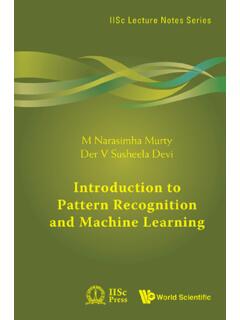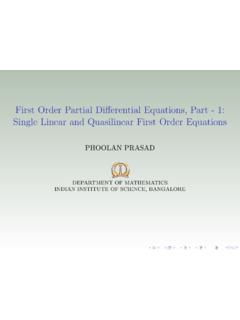Transcription of Submission Guidelines - TubiTV Corporate
1 Submission Guidelines We distribute high quality media streams to a wide variety of outlets including OTT, Mobile, the Web, Xbox, Playstation, and Smart TVs. For this, it is necessary for us to receive the highest quality source material which are then streamed as Titles . A complete Title includes: Video(s) Trailer Artwork Metadata Closed Captions** Adhering as close as possible to the requirements set forth in this document, allows for us to provide the best viewer experience and the quickest time from receipt of source to broadcast. **Closed Captions: FCC rules require captioned programs shown on TV after September 2012 to be captioned when re-shown on the Internet. For complete federal Guidelines see: 0 Contents Section 1: Video Asset Files (pg. 2) Section 2: Artwork Specifications (pg. 9) Section 3: Closed Captions (pg. 11) Section 4: Metadata Guidelines (pg. 11) Section 5: File Delivery (pg.)
2 12) 1 Section 1: Video Asset Files Content Types A Title can be categorized as either a Movie or a Series. A Movie is a self contained Title that is not associated with any other Title . An example of this would be the movie Top Gun . A Series consists of a Series Title associated with multiple Episode Titles . An example would be the Series Title Camelot which is associated with the Episode Titles Homecoming, The Sword and the Crowd, etc . All required assets (metadata, video(s), artwork, trailer(s), CCs*) must be received up to spec before we can begin processing a title. General Title Specifications For The Video Asset Program Material is the actual video content that is to be shown to the viewer. There must be no more than 2 seconds of black before and after the Program Material . Program Material must not contain color bars, production credits, overlays, advertisements, textless elements, or QuickTime edit lists.
3 Burned in Closed Captions will only be accepted with special permission. There can be no periods of black longer than 1 second within the Program Material . There must be only 1 video stream along with at least one stereo audio stream in the file. Each Title must be self-contained. If the Title is a 120 minute movie it must be received as a single 120 minute media file. Video Formats The preferred video codecs in decreasing order are: ProRes 422 HQ ProRes 422 (AVC) Accepted file container formats are: .mov .mp4 .mpeg .mpg .mxf 2 ProRes is a lightly compressed codec whose bit rates fall within fairly defined limits within each type. The ProRes Target Data Rates chart shows the standard bit rate range we require for each of the two accepted types. (AVC) is a much heavier compressed format and the bit rate is more dependent on the actual content of the source. A video with a lot of motion generally has a higher bitrate than a video with a low amount of motion.
4 Because of this you will find a much greater difference in (AVC) bit rates. The Target Data Rate Chart shows the bit rate range we require for (AVC) submissions . Frame Rates Accepted frame rates are , 24 , 25 , , 50i, fps. If the native frame rate is one of our accepted rates, we would prefer to receive that native frame rate. However, if the native frame rate is not an accepted frame rate, conversion is required. Interlaced content is only accepted for SD content or for HD content at fps. Resolution Native resolution is required along with a minimum size of 640x480 pixels . Preferred resolution is 1920x1080 All upscaled content will be rejected. (AVC) Target Data Rates 3 ProRes Target Data Rates 4 Audio Formats Preferred delivered audio formats include: PCM 16-32 bit, audio AAC audio A stereo audio stream is required when available Any extra audio channels should be mapped as described in the Audio Mapping Guidelines .
5 Important: A stereo stream or correctly labeled streams that can be down mixed to stereo are required . We require at least one channel of audio information with every video file. Our preference is to receive at minimum, a single stereo audio stream. In QuickTime, streams are called Audio Tracks. If there are more audio channels than the required stereo channels, they would have to be mapped correctly, with each additional audio channel in it s own individual stream. The Additional Helpful Information section provides a more detailed explanation of the differences between a stream and a channel Different Types of Audio Channels and Groups of Channels Mono - One channel of audio information. This single channel is sent to both the left and the right speakers or headphones of whatever device is playing the media file. Stereo - 2 channels of individual audio information where one channel is sent to the left and one channel is sent to the right speakers or headphones of whatever device is playing the media file.
6 Surround Sound - Multiple channels of separate audio information that are individually sent to different speakers in a surround sound system. The main configurations are and These contain 6 channels of information for and 8 channels for The .1 stands for a sub audio channel of very low frequency. M+E - This stands for Music and Effects. It is usually 2 channels of audio information which contains the entire audio mix, except for any dialogue. This is used in case a different language is needed to be overdubbed over the original soundtrack. 5 Understanding Channels, Streams, and Containers To understand audio mapping, you must first understand the difference between a channel, a stream, and a container. A channel is a single media signal. In a stereo stream you have two channels of audio, a left channel and a right channel. When sent to speakers, each channel contains just the information for either the left or right speaker.
7 An audio stream can contain one or more channels of audio information. This can be a 2 channel stereo stream with a right and left channel. It can be a 6 channel stream with surround channels. It can also be a single channel such as the Left channel of a mix. They can all be found within 1 stream. A container can be made up of one or more streams. Each stream contains a single type of media. These can be a video stream, audio channel(s), Closed Captions track, timecode information, or metadata. When the streams are combined or mixed, they are wrapped in what is called a container file. This container file has all of the media data with all the component media. For our purposes, the structure is analogous to a top level folder (Container) that has a folder inside (Stream) that has a folder inside (Channel). This is an extremely simplified explanation and is only used to show the nesting position for each part of the package.
8 Common container types used in video are Quicktime (.mov, .qt, .mp4 extensions) and MPEG (.mpg, .mpeg extensions). Each one of these containers has their own benefits and limitations (see for details). This shows a Container file with an individual Stream that contains One Channel of media. 6 An example of correctly mapped audio would be (Quicktime Inspector view): This particular file has 7 individual audio streams along with the ProRes 422 HQ video stream. The stream order is: Stream 1: ProRes 422 HQ Video Stream 2: Left Channel Audio Stream 3: Right Channel Audio Stream 4: Center Channel Audio Stream 5: LFE Channel Audio Stream 6: Left Surround Channel Audio Stream 7: Right Surround Channel Audio Stream 8: Stereo Channel 7 An example of incorrectly mapped audio would be (Quicktime Inspector view): This particular file has 4 audio channels in one stream along with the ProRes 422 HQ video stream.
9 Another example of incorrectly mapped audio would be (Quicktime Inspector view): This particular file has 4 audio streams with one channel of audio in each stream along with the DV video stream. 8 Section 2: Artwork Specifications Before any Title goes live, all needed artwork must be received and approved. A Film or Series will have three different images associated with it; a Poster Image , Landscape Image , and Hero Image . The specifications are as follows: Image Parameters for Films and Series JPEG or PNG (quality unconstrained) RGB Max file size for images is 6MB and must contain no more than 70,000,000 pixels. Please resize your images as needed Image 1: Poster / Title Image Size : At least 900 x 1285 pixels at 72 dpi Aspect Ratio : .7 Additional Information : Do not include credits, ratings, company logos, and promotional information on the artwork image. Include all image text within the title safe area (approx.)
10 90% of poster dimensions) Title Safe: Real World Example: 9 Image 2: Landscape Image Size : At least 896 x 504 pixels at 72 dpi Aspect Ratio : Additional Information: Images must contain the title , preferably without any other additional text. Required only for Movies and Series Title Safe: Real World Example: Image 3: Hero Image Size : At least 1920 x 1080 pixels at 72 dpi Aspect Ratio : (16:9) Additional Information : Do not include any text, including title art, credits, ratings, company logos, and promotional information on the artwork image. Real World Example: 10 Section 3: Closed Captions FCC rules require captioned programs shown on TV after September 2012 to be captioned when re-shown on the Internet. For complete federal Guidelines see: All Closed Captions must be delivered at the same frame rate as the source video.




